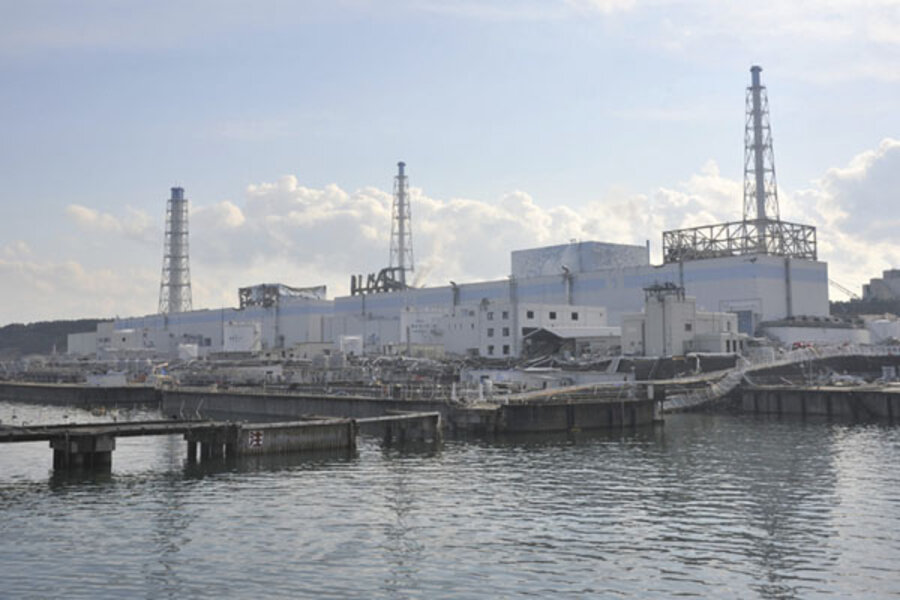Radiation 101: How far will radioactive water leaking from nuclear plant go?
Loading...
| Washington
Seawater near the stricken Fukushima Daiichi nuclear complex is highly contaminated with radioactive iodine, plant operator Tokyo Electric Power Co. (TEPCO) reported Tuesday. But TEPCO also said workers are making headway in an attempt to seal a concrete pit they believe is leaking radioactive water into the Pacific Ocean.
Ocean contamination has become a more critical issue in Japan in recent days as the extent of Fukushima’s leakage has become clearer. The presence in seawater samples of highly radioactive substances such as iodine-131 and cesium-137 indicates that the radioactivity is flowing out of reactor units themselves, according to Japanese officials.
This situation led Japan on Tuesday to set first-ever radiation safety limits for fish. That level is equal to the maximum allowable radiation limit for vegetables, said Chief Cabinet Secretary Yukio Edano at a press conference.
“We will conduct strict monitoring and move forward after we understand the complete situation,” said Mr. Edano.
However, TEPCO insists that the radioactivity detected so far presents little risk to human health. The half-life of iodine-131 is eight days, so it will decay quickly. The half-life of cesium-137 is much longer, at 30 years, but it will be quickly diluted in the vast Pacific Ocean, say TEPCO officials.
Where will the radioactive water go? Japan is fortunate in that ocean currents near Fukushima may well carry the radiation away from land and help the dilution process. The Kuroshio Current, the Japanese equivalent of the Gulf Stream, flows up Japan’s east coast before veering off to the northeast in open waters.
This temperate current carries the water volume of 6,000 Danube Rivers and should quickly mix and dilute radioactive elements. The Japan Coast Guard keeps a close watch on the current and posts daily updates on its condition.
Japan’s radioactive water problem has developed in large part due to the ad hoc methods workers have used to try to cool reactor fuel units and avoid the disaster of a complete meltdown of the reactors' cores.
With normal pumps broken and electricity unavailable in the weeks since an earthquake and tsunami shattered the plant, TEPCO has had to cool the site by pouring water on reactor units using hoses and temporary pumps from outside containment buildings. While much of this water has evaporated or remained within the buildings, much has also inevitably leaked away.
A hole in a pit beneath reactor Unit 2 has become a prime suspect in the search for the source of radioactive pollution. On Tuesday workers continued to inject a hardening agent, liquid glass, into gravel beneath the pit. That appears to be slowing the leak, according to photos released by TEPCO.
Seawater measurements taken in recent days show radioactive contamination at several million times the legal limit, said TEPCO on Tuesday. These readings were taken closer to the plant than previous measurements, however, so it was not clear whether they reflected an actual worsening of the situation.
The International Atomic Energy Agency reported Tuesday that its own measurements of radiation in seawater close to the discharge pipe that serves reactor units 1 through 4 showed a “decreasing trend” from April 1 to April 4.
These measurements were taken before TEPCO, with approval of the Japanese government, began releasing water with low levels of contamination directly into the ocean in order to clear tank storage space for reactor-unit wastewater with much higher radioactivity readings.





